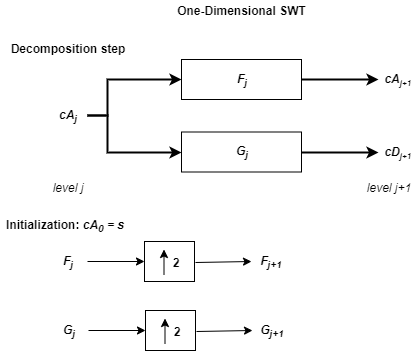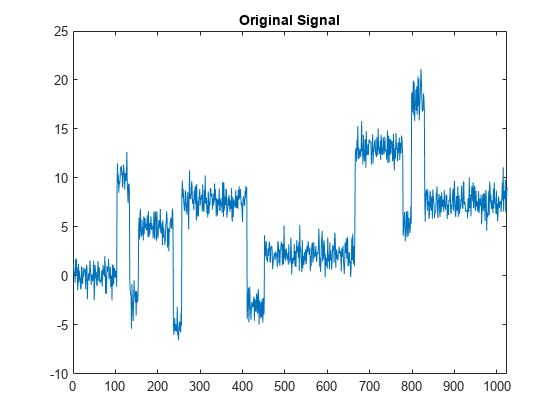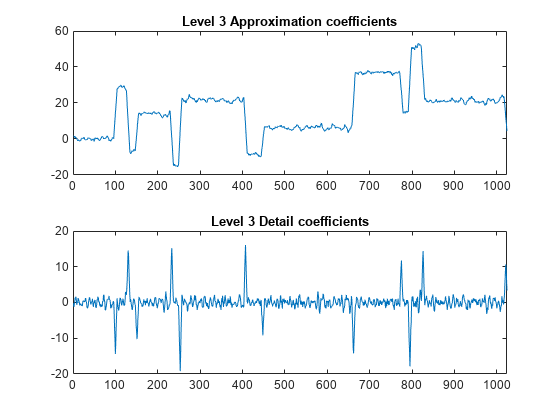swt
Discrete stationary wavelet transform 1-D
Description
Examples
Input Arguments
Output Arguments
Algorithms
Given a signal s of length N, the first step of
the stationary wavelet transform (SWT) produces, starting from s, two
sets of coefficients: approximation coefficients
cA1 and detail coefficients
cD1. These vectors are obtained by
convolving s with the lowpass filter LoD for
approximation, and with the highpass filter HiD for detail.
More precisely, the first step is

where ![]() denotes convolution with the filter X.
denotes convolution with the filter X.
Note
cA1 and
cD1 are of length
N instead of N/2 as in the DWT
case.
The next step splits the approximation coefficients cA1 in two parts using the same scheme, but with modified filters obtained by upsampling the filters used for the previous step and replacing s by cA1. Then, the SWT produces cA2 and cD2. More generally,

where
F0 = LoD
G0 = HiD
 — Upsample (insert zeros between elements)
— Upsample (insert zeros between elements)
References
[1] Nason, G. P., and B. W. Silverman. “The Stationary Wavelet Transform and Some Statistical Applications.” In Wavelets and Statistics, edited by Anestis Antoniadis and Georges Oppenheim, 103:281–99. New York, NY: Springer New York, 1995. https://doi.org/10.1007/978-1-4612-2544-7_17.
[2] Coifman, R. R., and D. L. Donoho. “Translation-Invariant De-Noising.” In Wavelets and Statistics, edited by Anestis Antoniadis and Georges Oppenheim, 103:125–50. New York, NY: Springer New York, 1995. https://doi.org/10.1007/978-1-4612-2544-7_9.
[3] Pesquet, J.-C., H. Krim, and H. Carfantan. “Time-Invariant Orthonormal Wavelet Representations.” IEEE Transactions on Signal Processing 44, no. 8 (August 1996): 1964–70. https://doi.org/10.1109/78.533717.
Extended Capabilities
Version History
Introduced before R2006a

